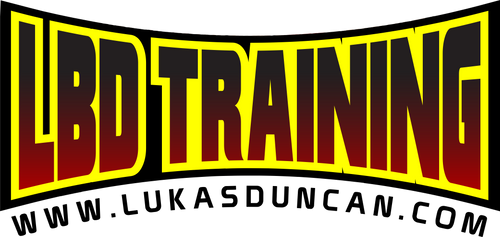Intro
So, you’ve been going hard in the gym and putting some intensity into it. However, through all of that effort, you find your way into a state of overtraining. You feel run-down, tired, and injuries start to show up. Even though training takes effort, we all have different levels of what we can handle. From the beginner to the advanced lifter, doing TOO much is a reality.
In this post, you’re going to learn more about how training can affect your nervous system in a way that causes overtraining. By the end, you’ll know exactly what you need to do to avoid it and work your way out of it.
What Can You Handle?
Everyone is a little different when it comes to your ability to handle stress. For someone who’s brand new to lifting and training, you’re more than likely to have a lower limit. Your body isn’t as used to or adapted to the stressors; therefore, you can quickly end up on the wrong side of things. On the other hand, a more seasoned veteran in the gym can more than likely handle higher levels of stress.
In addition, you have to take into account the kind of stressors that you’re being exposed to. There are varying intensities, weights, volumes, and speeds that you can train at. All of which play a part in providing stress. If you train at 200% for the majority of the time, you’ll more than likely hit a wall at some point. The same may happen if you try maxing out your lifts every week! However, if you manage those stressors with balance, you’ll be able to train much longer without any problems.
It’s important to note that all stressors cause stress. This means that if you live a stressful life, that needs to be taken into account with your training. If you work a physically demanding job, and then you attempt maxing out every day, you’ll likely run into some problems. If you lack proper amounts of sleep and recovery, that needs to be taken into account as well.
With all of this in mind, how do you find out what you can handle? It often comes from experience. It’s good to push yourself from time to time, but you also need to work in a way that allows for recovery. If you constantly find yourself injured, aching, not sleeping well, and low on energy it may be time to look at your training volumes. You may also need to look at a way of balancing out your other lifestyle factors.
The Central Nervous System
The central nervous system or the CNS runs the show. It’s important for most functions of the body and mind and is made up of the brain and spinal cord. It takes in information and processes it to respond accordingly. As you train, you accumulate fatigue in the CNS. This fatigue is normal, and you adapt to handle more of it when rest is allowed. When you lack the proper amounts of rest and recovery for that adaptation, it catches up to you. That fatigue can lead to lower levels of strength, speed, power, motor control, and movement quality. Altogether, it leads to a lower level of communication between your nervous system, which creates some speed bumps in your overall functioning.
When the CNS is fatigued, you won’t just notice physical changes. You’ll also have some disruption mentally. You’ll notice that you’re more irritable and emotional throughout the day. You’ll also find that your sleep patterns are off in addition to food cravings.
A fatigued CNS can even lead to lower levels of immune function, which can lead to you being sick more often.
The CNS is a critical part of your everyday life, and it’s a super-powerful system. However, training irresponsibly or not considering rest can lower your ability to get better. If you aren’t running optimally, you can’t progress the way you intend to.
Why You Need Rest Days
Now that you understand the impact that overtraining can have on the CNS, let’s talk rest days. It’s a cliché thing to avoid rest days, right? You often run into people preaching the NO DAYS OFF mentality, but is that going to benefit you? It may do more harm than you realize.
Rest days give you time to recuperate from intense training and are necessary. Don’t think of them as falling behind, as they’re propelling you forward! You’ve done all that work on your body, now it’s time to let that investment grow!
A good recommendation is to have between one and two rest days built into your week. These rest days don’t have to be a lazy day and can include things like walking, cycling, or other low-intensity activities. Taking part in these would be considered active recovery! It’s totally up to you how to spend those rest days, but what matters most is that you include them.
You’ll notice that you return to the gym feeling refreshed, stronger, and ready to take on the next challenge!
Conclusion
It’s important to take anywhere from one to two rest days a week. Every person is going to have a different tolerance for training than the next based on many factors. Your best bet of finding your limit is to pay attention to how you feel. If you start to suddenly feel weak, slow, and tired you could be overdoing it. This is where you can analyze your training routine and make adjustments. While it may be considered counter-productive for some, rest days truly move you forward so that you can train for a long time!

